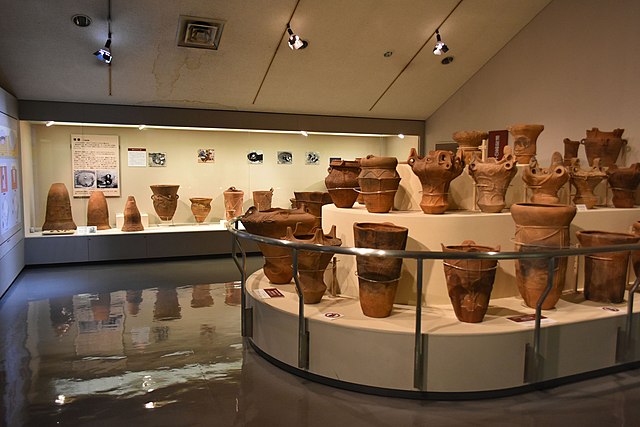Jōmon people is the generic name of the indigenous hunter-gatherer population that lived in the Japanese archipelago during the Jōmon period. They were united through a common Jōmon culture, which reached a considerable degree of sedentism and cultural complexity.
Diorama of Jomon people at Sannai Maruyama.
Magatama – kidney-shaped beads – are commonly found in Jōmon period Japanese finds, as well as in parts of Northeast Asia and Siberia.
Demographic history of the Jomon lineage (A) Maximum likelihood phylogenetic tree reconstructed by TreeMix under a model of two migrations
Jomon and Continental Asian contributions to modern Japanese
In Japanese history, the Jōmon period is the time between c. 14,000 and 300 BC, during which Japan was inhabited by a diverse hunter-gatherer and early agriculturalist population united through a common Jōmon culture, which reached a considerable degree of sedentism and cultural complexity. The name "cord-marked" was first applied by the American zoologist and orientalist Edward S. Morse, who discovered sherds of pottery in 1877 and subsequently translated "straw-rope pattern" into Japanese as Jōmon. The pottery style characteristic of the first phases of Jōmon culture was decorated by impressing cords into the surface of wet clay and is generally accepted to be among the oldest in the world.
Reconstruction of the Sannai-Maruyama Site in the Aomori Prefecture. It shares cultural similarities with settlements of Northeast Asia and the Korean Peninsula, as well as with later Japanese culture.
Incipient Jōmon pottery (14th–8th millennium BC) Tokyo National Museum, Japan
Jōmon pottery in the Yamanashi museum.
Spray style Jōmon pottery








